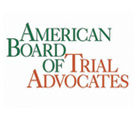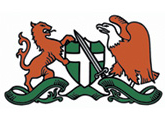Injuries related to car accidents vary depending on the circumstances leading up to the crash. Some injuries are minor and resolve on their own. Others require medical attention and may take longer to heal. In worst-case scenarios, the crashes may lead to severe injuries that result in permanent disability or a permanent condition. All these injuries, other than medical attention, compromise your ability to work, engage in social activities as you used to, or worse, permanently affect your mobility and ability to care for yourself.
While every accident has its unique set of circumstances, there are common injuries car accident victims suffer. Identifying them will help in your pursuit to seek compensation for your injuries.
Risk Factors
Certain factors contribute to the severity of the injury accident victims suffer.
Safety Belt Use
Seat belts are safety features whose importance is often overlooked. When hit, the belt reduces the force transferred to your body from the impact. Thus significantly restraining you from hitting any part of the vehicle. Therefore, a driver or passenger who did not fasten their belt before the crash is likely to suffer more severe injuries.
The Presence of Airbags in the Car
All cars should have functioning airbags. New vehicles are fitted with airbags before they are sold. There is no guarantee that second-hand vehicles have functional airbags because they could have been involved in an accident and were never replaced.
The bags inflate after a collision to protect the occupant of the vehicle from hitting the vehicle’s interior. Additionally, they also prevent objects outside the car from hitting a vehicle’s occupants. The lack of an airbag or a properly functioning one increases the risk of severe injury.
Nature of the Crash
Vehicle speed and the type of accident determine the nature of the accident and the degree of the injuries suffered. Low-speed collisions result in low-impact crashes. Conversely, high-impact crashes are caused by high-speed collisions and often lead to catastrophic injuries.
The accident types also lead to varying degrees of injuries because of the different angles and proximity of the victim to the point of impact. T-bone, head-on collisions, roll-over accidents result in severe injuries compared to side-impact or rear-end collisions.
Common Personal Injuries Related to Car Accidents
Injuries suffered in car collisions fall into two categories, impact and penetrating injuries. In addressing the accident’s severity, the focus is on how the injury impacts a victim’s life and the resources required to treat the injury. Therefore, impact and penetrating injuries can have varying degrees of severity.
When your body hits a vehicle’s interior or objects in or outside the car upon impact, the resulting injuries are impact injuries. These injuries include those a victim experiences from hitting the vehicle’s dashboard, windows, or seat rest. On the other hand, penetrating injuries are cuts, bruises, or scrapes brought about by loose objects flying inside the vehicle or shattering glass upon impact.
-
Impact Injuries
The following are some of the typical impact injuries car collision victims experience.
Soft Tissue Injuries
Soft tissue injuries affect a body’s connective tissue, that is the tendons, ligaments, and muscles. Tendons connect two bones, while tendons connect muscles to bones. In most cases, the injuries are either sprains or strains. When a ligament is stretched too far or is torn, you will suffer a sprain. On the other hand, an overextension or tearing of the muscles or tendons is a strain injury.
The most common soft tissue injury is whiplash. The injury affects the neck muscles and is a common injury in rear-end accidents. A sudden impact propels the vehicle’s occupants’ bodies forward while the head remains in the same position. This movement then exposes the neck to sudden and extreme flexion and extension, causing a whip-like motion.
Victims of whiplash injuries experience dizziness, neck pain and stiffness, blurred vision, headache, decreased range of motion, and blurred vision. Additionally, other soft tissue injuries may result in shoulder and back pain and unusual sensations, including tingling, burning, or prickling feeling in the arms or feet.
Head and Brain Injuries
Collisions often lead to car accident victims banging their heads on vehicle surfaces or roads. Objects thrown around upon impact may also hit a passenger or a pedestrian’s head. Any impact on the head leads to either open head or closed head injuries.
In open head injuries, the skull is compromised through a skull fracture. The severity of the fracture determines how severe the injury is and the longtime consequences. Minor fractures often result in dizziness, loss of coordination and balance, temporary memory loss, or headaches. With medical care, most victims recover from these injuries. However, if the fracture is severe, it is almost always certain that the injury will result in a fatality especially if not attended to immediately.
Skulls in closed head injuries are not compromised. However, the impact affects the brain. Common closed head injuries include brain bleeds, concussions, or Traumatic Brain Injuries (TBI). These injuries require cranial Tomography (CT) Scans to identify. Brain seizures, amnesia, loss of consciousness are some of the signs of a brain injury.
It is essential after a collision to determine if you suffered a brain injury as soon as possible. Failure to do so may result in further medical complications over time.
Chest Injuries
An impact with the chest could lead to several injuries, including fractured ribs, chest muscle strain, ruptured diaphragm, a fractured sternum, or punctured lungs. Additionally, you could also experience chest bruising, internal injuries, or abrasions in minor collisions. Dashboards and steering wheels, in most cases, cause chest injuries upon impact. Additionally, while seatbelts have saved thousands of lives, they too can cause injuries.
Victims mostly experience pain in the chest and difficulty breathing. The extent of the injury is only established upon extensive medical checks.
Shoulder Injuries
Shoulder joints have a wide range of motion thanks to a ball and socket connection. The upper arm bone, the humerus, connects to the shoulder blade, scapula, through the shoulder joint. While the wide range of motion is advantageous while going about your daily routine, it causes instability of the shoulder when involved in an accident.
Extreme mobility can cause several injuries, including torn rotator cuffs, shoulder blade fracture, and shoulder dislocation. Common shoulder injuries include:
-
Shoulder Dislocation
When hit, the body and shoulder movements may vary in intensity, thus causing a shoulder dislocation. The injury is painful but can be rectified through gentle maneuvers to put back the humerus in place. In case of extreme pain or inflammation, a doctor may recommend surgery.
-
Shoulder Blade Fracture
Shoulder blade fractures are rare and result from a high impact on the shoulder area. The injuries are excruciating and require immediate medical attention and subsequent rehabilitation procedures to regain the shoulder’s functionality. Most shoulder blade fractures occur from T-bone or rollover accidents.
-
Torn Rotator Cuffs
Rotator cuffs allow for the mobility of the muscles and tendons surrounding the joint. Cuff injuries are harrowing and often lead to loss of shoulder strength.
Rotator cuff injuries often occur when passengers tightly hold on to a rigid object upon impact. Drivers may hold onto the steering wheel, while back seat passengers may hold onto the driver and co-driver seats right before impact. The hold makes the shoulder rigid, thus resulting in a tear in the cuffs.
Back and Spine Injuries
Spines are divided into three categories, cervical, thoracic and lumbar spine.
The cervical spine lies between the cranium and the thoracic spine. Therefore, cervical injuries affect the neck.
The thoracic spine is linked to the ribs and chest cavity. Any impact risks affect the nerves, thus increasing the likelihood of permanent disability.
The lumbar spine, on the other hand, is connected to the back muscles. Injuries to the lumbar spine compromise a victim’s mobility resulting in pain and swelling of the impact region.
Some symptoms or early warning signs of a spinal cord injury include:
- Loss of movement
- Difficulty breathing, clearing lung secretions, or coughing
- Muscles spasms
- Altered or loss of sensations, including the ability to feel cold, heat, and touch
- Pain and intense stinging sensation, indicative of damaged nerve fibers,
If you experience or witness the following symptoms in a loved one, their injury is an emergency case.
- Loss of bladder or bowel movement
- Extreme pressure on the neck, head, or back pain
- Numbness
- Difficulty walking or maintaining balance
- Oddly positioned or twisted back or neck
- Incoordination, weakness, or paralysis of any part of the body
While spine injuries can be mild, the risk of paralysis, temporary or permanent, increases the need for early professional medical checks. Early medical assessments could determine the completeness of the injury and, by extension, its severity.
If a victim loses all sensory feelings or motor function below the level of the spinal injury, the spinal cord injury is said to be complete. If the victim retains some function below the level of injury, then they suffer from an incomplete spinal cord injury.
There are several types of spinal cord injuries. They include the following:
- Cord contusion — Contusions refer to bruising. Spinal cord bruising may cause swelling, cell damage, and bleeding. Victims with these injuries often experience numbness and chronic weakness. Paralysis is a possibility but a worst-case scenario.
- Concussion of the spinal cord — This injury results in temporary paralysis. It is at times referred to as cervical cord neurapraxia.
- Cord compression
- Tears of the cord — Spinal cord tears often result in complete paralysis. These injuries are severe and require urgent medical attention.
- Disk bulge — Vertebral disks sit between vertebral bones. They cushion the spinal column. Disk bulging occurs when the disk is outside the position it's meant to occupy.
- Disk herniation or ruptured disk — Slipped disk, disk herniation, or ruptured disk occurs when the soft section of the spinal disk pushes through a crack in the outer, tougher casing. Some herniated disks may go undetected because they show no symptoms. However, others will experience numbness, pain, and weakness in the legs or arms.
Leg and Knee Injuries
Injuries affecting the legs start from the hip, affect the knee, femur bone, and ankle.
Hip injuries are especially excruciating and compromise your ability to move around. The injuries range from deep tissue bruising to hip dislocation, which requires surgery. Plates and screws will be embedded to reposition the hip bone to its original position. In other instances, a hip replacement could be the recommended solution. Additionally, if the femur bone is shattered, steel pins will be required.
Further, hip injuries require extensive and prolonged recovery and rehabilitation therapies that are not cheap.
Knees are vulnerable. An impact on the knee could result in a severe injury that ultimately ends in disability. Most accident victims experience the following knee injuries:
- Dislocated knees
- Ruptured tendons
- Twisted ligaments
- Knee fractures
- Ligament hyperextension
Ankles support our weight and help maintain balance when running, walking, or standing. Any ankle injury is sure to immobilize you until it is resolved. The injuries are excruciating and require extended therapy to heal.
-
Penetrating Injuries
Here’s a look at some of the common penetrating injuries accident victims experience
Lacerations
Split lacerations are painful injuries and can be severe. They occur when a part of the body is crushed between two objects, thus causing the muscle tissue and the skin below to rupture. The immediate consequence of these injuries is blood loss. If medical attention is not provided immediately, a victim could die due to blood loss.
However, blood loss is not the only consequence of lacerations. If you suffer lacerations, you could be scarred and disfigured, you are at risk of an infection, or you could suffer nerve damage.
Scarring could require cosmetic surgery in addition to the surgeries needed to treat, remove and heal the injury. If you do not have the resources, your scarring could be a disfigurement you may end up living with for the rest of your life.
Conversely, infections require medication as soon as possible. Untreated infections cause tissue and muscle damage, whose solution is amputation. Early treatment is the best treatment and safeguard to limiting the spread of the infection.
Burns
Years of safety regulations and technological advancements have ensured vehicles don't burst into flames. However, accidents that result in fires are not uncommon for conventional gasoline-powered cars. Electric vehicles too pose a danger of bursting into flames.
Three issues stand out as the leading cause of fires in vehicle crashes: electrical faults, flammable cargo, and fuel. Establishing the cause helps identify the potential defendants in a personal injury claim.
It is equally important also to note that fires are not the only cause of burns. Touching hot vehicle surfaces like the exhaust or engine, chemical burns, or coming into contact with hot water or steam also cause burns.
Burn victims suffer first, second, or third-degree burns, and each requires specific treatment.
First-degree burns only affect the outer layer of the skin, the epidermis. The burn site is painful but lacks blistering. Ointment, pain medication, and bandaging the burn site are often enough to treat the wound.
Second-degree burns affect the epidermis and part of the underlying skin, the dermis. The burn site, as with the first-degree burn injuries, is painful, swollen, and red. Second-degree burns have blistering wounds, and thus requiring extensive medication would be required as treatment.
Third-degree burns are more severe. They affect the dermis, the epidermis, muscles, tendons, and bones. Since the epidermis is severely compromised, hair follicles will be destroyed. Therefore, victims lose their hair and ability to regrow it and new skin. Once healed, scarring and disfigurement will be an expected eventuality.
Emotional and Psychological Challenges
A personal injury claim for compensation for any of the above injuries seeks economic damages. The damages cater for the cost incurred or future treatment costs, including any incidental expenses incurred while seeking treatment.
Car accidents also result in emotional or psychological distress. It is difficult to quantify the value of psychological or emotional suffering. However, you still can seek compensation for the same. In your personal injury suit, you will seek non-economic damages for emotional or psychological suffering and economic damages for treatment costs.
Emotional and psychological challenges are not injuries per se. However, they are consequences of a car accident.
A significant portion of car accident victims end up suffering mental health decline. Some of the common symptoms they present include:
- Depression
- Inability to enjoy their daily activities as before
- Phobia and new fears (for example, riding in a car) they did not experience prior to the accident.
- Elevated levels of anxiety
- Mood swings ranging from frustration and guilt to anger
- Withdrawal from social events and human contact
- Nightmares and disrupted sleep patterns
- Post-traumatic stress disorder
It is crucial to seek a mental health expert if you experience any of the above symptoms.
Find a Car Accident Attorney Near Me
Victims of car accidents suffer greatly. The injuries cause you significant pain and interrupt your daily life. In more extreme cases, you can suffer permanent paralysis that completely alters your way of living or, worse, lose a loved one. Moreover, the financial burden medical treatments impose on victims will add to your suffering.
Despite these challenges, a personal injury lawsuit can help mitigate the financial burden and, by extension, help lessen your suffering. If you or a loved one is a car crash victim, do not hesitate to seek legal assistance. The team at Los Angeles Car Accident Attorney is ready to take up your case. Give us a call today at 424-237-3600.






